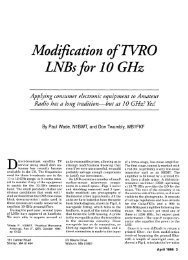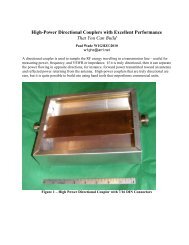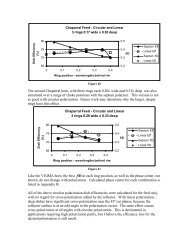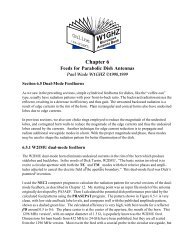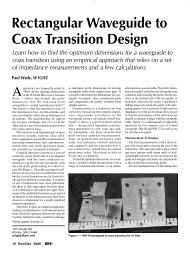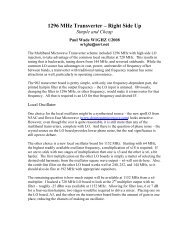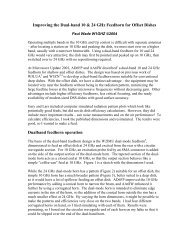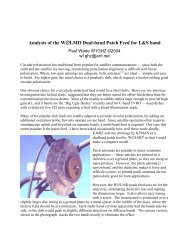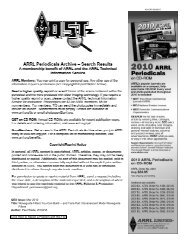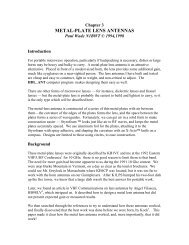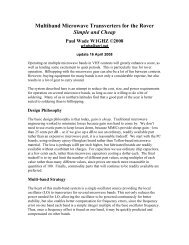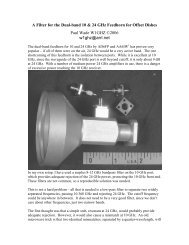VE4MA and Chaparral feeds with Septum polarizers - W1GHZ
VE4MA and Chaparral feeds with Septum polarizers - W1GHZ
VE4MA and Chaparral feeds with Septum polarizers - W1GHZ
You also want an ePaper? Increase the reach of your titles
YUMPU automatically turns print PDFs into web optimized ePapers that Google loves.
<strong>Chaparral</strong> vs super <strong>VE4MA</strong>0.71lambda horn diameter, 1.9 lambda total blockage80Dish Efficiency (%)7570650 0.1 0.2 0.3 0.4 0.54 ring 0.15 x 0.333 ring 0.20 x 0.332 ring 0.30 x 0.33<strong>VE4MA</strong> 0.6 x 0.45Ring position - wavelengths behind rimFigure 22The radiation patterns from the <strong>Chaparral</strong>-style <strong>feeds</strong> do not demonstrate the large dip inthe center that seems to provide improved efficiency for the best <strong>VE4MA</strong> variations. Theadditional rings seem to simply reduce radiation in undesired lobes <strong>and</strong> put more evenenergy over a wide angle on the reflector, as seen in Figure 23, a 3D pattern for the feedin Figure 22 <strong>with</strong> 3 rings 0.20λ wide <strong>and</strong> 0.33λ deep, 0.25λ behind the rim. The result isthe high efficiency plotted in Figure 24.Figure 23. 3D pattern for <strong>Chaparral</strong> feed <strong>with</strong> 3 rings 0.20λ wide <strong>and</strong> 0.33λ deep, back 0.25λThe advantage of the <strong>Chaparral</strong>-style <strong>feeds</strong> over the simpler <strong>VE4MA</strong> is high efficiencyover a wider range of f/D, <strong>and</strong> probably over a broader b<strong>and</strong>width. The b<strong>and</strong>width wasnot investigated since all amateur operation is in relatively small b<strong>and</strong>widths.



